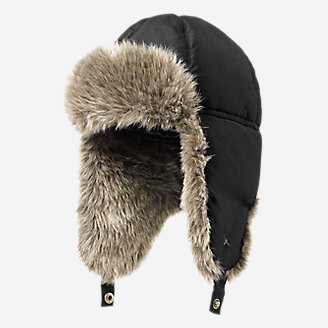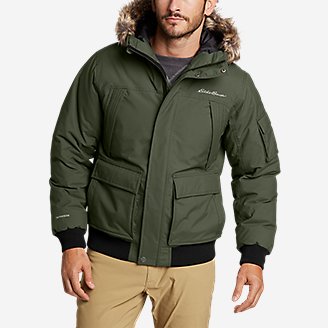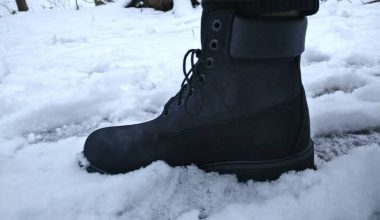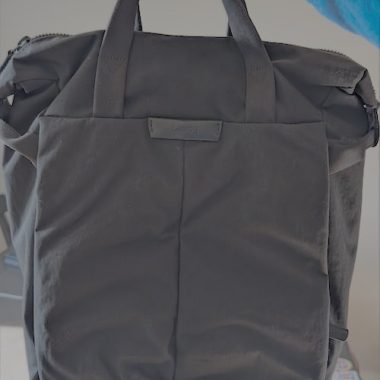So you just moved to a winter / four-seasons country and woop woop you’re about to experience your first winter! Or maybe you’ve been living in a winter country all your life but you just never bothered to actually invest and think about having a performant winter jacket. Here’s how to pick your first winter jacket! Now’s all the time to realize that “There is no such thing as bad weather, just bad clothes”!
This article is perfect for you if you’re looking for a winter jacket that not only looks nice but something that’s actually warm and is working. Speaking of, I’m not going to be dabbling much on the fashion side of it all. You pick what you like/want on those factors. These are just my opinions and experiences. I’ve worn a lot. My goal is to give you some tips and guidelines to pick the right winter jacket that works (that is, it actually protects you from the winter climate/keep you warm).
Also by winter, I mean single digit degree Celsius.
What it is NOT
Let’s get the obvious things out of the way first:

This is a sweater or a hoodie. This is not a winter jacket. Layers and layers of this will not work. Well, maybe if you put 3-4 layers of it, but how would you be able to comfortably wear that right?

This is also NOT a winter jacket. This is a British Peacoat, popularized by media as a winter wear. This is not warm at all*. It is usually used and portrayed in media as what people wear in winter scenes. If you have a scene in your head, pull that from your memory. Also remember that on those scenes they were probably running from door to door to not stay outside much; possibly while shrugging and “brrr”-ing.
Researching more, a lot of people consider this as a “winter” wear. You know what, let’s classify this as “it is, but it’s just not as effective”. For me, it’s not. I’ve fashioned this attire before…not good against the cold. Maybe for a 16-degree C winter, sure. It’s made of wool, which is listed as a good insulator, but with the thin-ness of the attire and all the open holes, I find in my own experience, heat just leaks gushes out.
I’ve put an asterisk because, sure it “can” be warm; just like how it would be warm if you wear 10 layers of hoodies. Peacoats are actually warm IF you combine it with scarf to plug in your neck area, gloves for your hands, or if you(men) are wearing 2/3-piece suit underneath there since those are hot to begin with. So if you’re 24/7 fashionista purpose, go for it. Can you take it for winter hikes? No. Can you quickly just grab and use just this for that quick thing you will run for? No.
To be honest, this is more of a spring/fall fashion in general. The other practical way you can use fashion this in winter is if you’re driving, because what happens is that the only thing you always have to worry when you drive is running from the door to your car, then you get your next source of heat.
What it Is
Now THESE are winter jackets. Don’t worry, I will break down everything for you in this article. Actually, let’s just get on it:
Material
The first giveaway for a winter jacket is that they’re thick (and usually heavier as a result). Either there are multiple fabrics / materials in the jacket or more commonly you will find them filled with “down”. So going back in comparison to your hoodies and sports jackets…yea no.
Hood*
The second noticeable thing is the hood (the part you swing on your head) and the furry flap on the edges of it. Actually this is not a requirement for winter jackets but it’s worth noting the functionality of it. There are winter jackets made without hoods. For those that do have them, they are actually quite useful. If it’s snowing (the moment when snow’s actually falling on you right now) you’d want this. This prevents the snow falling on your head, melting on your head, forming an ice layer, and slowly sucking the bejesus heat out of you.
“So if it’s useful, why is it not required?”
Easy, some people prefer wearing a separate article, like a hat (for aesthetic and/or functional purposes), or none at all.

“What are those fluffy things on the edge of the hood?”
For most hoods, you’ll notice that the inside of the hood does not have this fluffy material, just the “rim” of the hood. What this does is it prevents the (very) cold air from flying in the hood when you have it on. It…”muffles” the wind if you know what I mean. Imagine a fan and take out the metal cage. If you turn it on, you can feel the full force of the wind. If you put back the cage, you might feel a negligible thing deadening that wind. If you then put a fine metal mesh on it, the air becomes “softer” and doesn’t go that far (it goes all over the place instead).
Waterproof-ability
Ideally you’d want your jacket to be waterproof. Why? Because if it snows, or you fall and roll around snow, or someone throws a snowball at you, it then just falls. But if it’s not waterproof, if it gets in contact with snow, it will stick (quickly melt and stay on the fabric) and then next thing you know you have a wet jacket. It adds more weight to an already-heavy jacket and eventually the water seeps through your jacket and gets to your skin. 0° temperature with cold winds then water is not a good combination.
Openings

Notice the cuffs (the black part on his wrists) and same thing on his waist. I don’t know what to call it but they’re “rib-knit cuffs or hem” as one company describes it. Basically it’s like a garter, a separate material from the jacket, it’s elastic and basically its primary purpose is to hug tight to your skin so there are no openings (on your wrist and on your waist).
You see with winter, wind is a big factor. So any hole where wind can enter (or heat exit) are points of concern since you’ll just be slowly leaking out heat. These solve that.

For the women’s jacket, I notice that some of them style these cuffs/waistbands, while for some they don’t. But if the jacket is made well and high quality, the nifty style for women is that it doesn’t seal the jacket from the outside (e.g.: with the waistband), but instead there’s actually a mechanism that tightens the jacket from within, thus achieving the same sealed effect (plus it looks nice with that outward/dress look).
Going back to the peacoat where the chest is just wide open, you can see here that this can be tightly zipped up to your…face pretty much.
That’s another factor. As you can see, all examples I’ve given they’re all fastened by zippers, to fully cover you from the elements. Buttons don’t work. Imagine wearing that British peacoat: one stride and the bottom part will flap and fly open. There goes your warmth. Same story everywhere else except the actual button parts.
Fit
At first glance, the size of the jacket might look intimidating. You’re probably thinking it’s tight and the jacket is pushing in on you. Nope. Most of those (especially those puffy jackets) are air (or soft materials you can compress).
You want your jacket to be both with ample space and snug. What do I mean? Well, like most articles of fashion, you’d want things to be snug and fitting of your size. If in doubt, refer to their size charts. Actually I suggest you do those either way.
At the same time you may (you don’t have to) want some extra space in there, depending on your preference. Why? Because let’s say for example your jacket of choice is ultra snug and fit that all you can wear is just a tee or a dress shirt. So what if you go out for dinner out there. Of course when you get to the restaurant you’ll be removing your jacket and you’re left with just a tee or one layer of dress shirt. First, it limits your style (what if you wanted to wear a scarf, a thicker cardigan, etc). Next is that…it’s still winter. So sure there are heaters in establishments but it will still be generally cold and you’ll be freezing with that tee. Now you’re warm outdoors and cold indoors lol.
Pricing
Like most things (after you realize it), “the more expensive, the better” is not always correct. So please don’t just oversimplify this article with “Canada Goose”. * facepalm *
Canada Goose specifically is a prime example where–I’m sure they’re great and they have top shelf products but–they’ve been getting hits with questionable practices and environmental sustainability. Their signature puffy jacket is…~well let’s just say that in uni it looks cool. After you graduate, you just realize you just look like a black Michelin man. You also wouldn’t see that type in Europe, to put that in fashion perspective.
Usual prices go from $200CAD onwards.
Do your research. Walk around. Basically shop. I’ve found great finds way back like in Winners for example. I remember I found something like $60CAD. Yes I know it was inexpensive and probably did not have a $200 worth of feature but when I tried it, I feel like I got $150 worth of value and warmth out of it.
My go-to fashionable winter jacket is actually from Geox, a usually-known-as-a-footwear brand. I also have an ultra puffy, ultra warm jacket where I basically look like an olive Michelin Man.
Then I also have a separate jacket for snowboarding (that’s a different story on its own since it has its own features and demands).
Warmth
Well, obviously you want it warm. How warm? Well, that’s relative to your preference. What I can help you with is this question:
How to know if it’s warm?
Well the easy way out is by the time you try the jacket, you’ll have had lots of indicators already, e.g.: price tag is high, jacket is heavy, there are a bunch of features listed in comparison to my points above.
So let’s say you’re buying an all-purpose, warm jacket. You need it for long commutes, waiting on busses, and you don’t want to be screwed if you get stuck on a snow storm outside. In that case you want really warm right?
So once you try the jacket in person, zip it up, close everything, even the hood if you want. After that do like 5-10 squats or something. If you feel like you’re starting to burn up already and things are getting sticky inside (if you’re just wearing a tee), then yea, that’s a really good jacket.
For my ultra-hot olive jacket, that’s what I did. I shopped with just a tee on, and just carrying and closing the jacket alone made me sweat already. I knew it was really warm; did not need to do squats. Yes, it was warm. I remember coming home during a snow storm. I literally just went in my apartment, dropped my things and came out again with just a tee and that jacket. I was totally warm and comfortable under the storm.
If you want more accurate “measurements”, wear something that’s more reflective to what you will likely wear if you’re out while wearing that jacket. Then yea, walk around, do some light things, then you can gauge from there.
Here’s an article if you want a detailed explanation of temperature ratings, insulation, and different materials.
Bonus Tips
If you’re just vacationing on a winter country, and let’s say you’re just going to be there for a couple of days, I suggest to NOT purchase one. Economically it’s so expensive if you’re just going to use it for a couple of days. The labour and environmental impact of making these jackets too are too intensive. People in winter countries usually keep these for years, so even if you’re balling, just don’t. It’s ruining the planet. It’s like buying a Jeep only to idle and listen to the radio.
These are situations where you have alternatives. For example if you just want to go from point A to B as a tourist, cab it or Uber it or something. If you want an outdoor winter experience, you can do the multi-layer clothing + any jacket or if you really anticipate a lot of outdoors, maybe multi-layer clothing + a low-tier jacket.
If you really see yourself visiting multiple cold countries, then go for it.
Also keep in mind that winters are relative. E.g.: winter in Toronto is wildly different than winter in Barcelona (their winter is milder for us).
Jackets are not the only thing you have to concern yourself when it comes to intense winters. Both the leg wear and footwear are equally important. My legwear article is coming up but I have a recommendation for you for a pair of proper winter boots!



